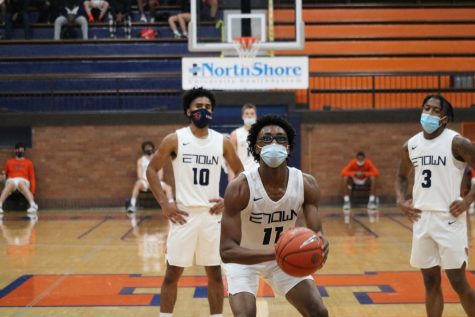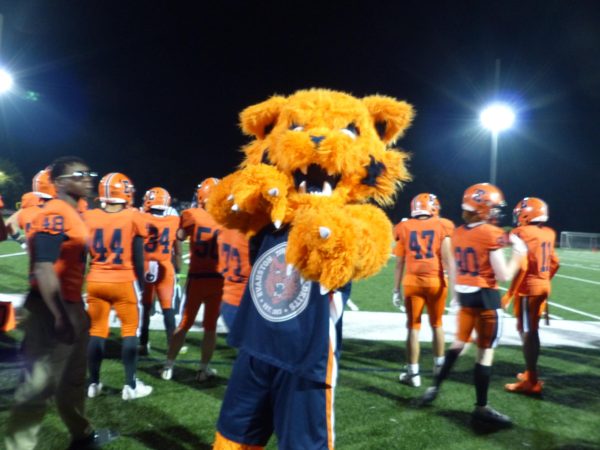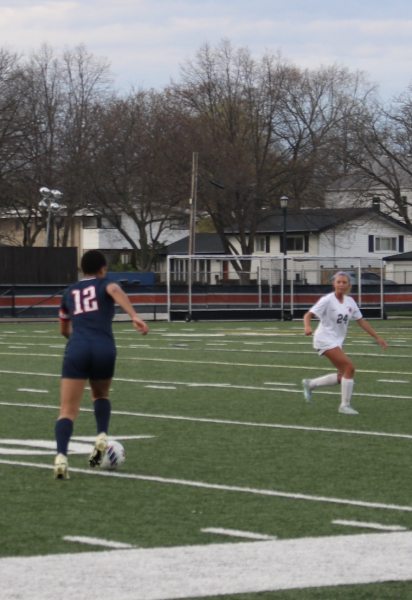Opinion | Cut sports create inequities in ETHS athletics
ETHS is an institution dedicated to providing equitable opportunities for the entirety of its diverse student body. From providing extra support outside of class to eliminating policies that perpetuate racial disparities, ETHS, for the most part, meets its dedication. This is, of course, aside from one important entity: sports teams.
There are more than 40 sports teams a student at ETHS can join. This includes the obvious choices: basketball, football, soccer, and baseball, and the not so obvious: badminton, bowling and ultimate frisbee. Considering its wide variety of athletic offerings, it would appear that ETHS encourages and welcomes student involvement on sports teams. It would appear that the school understands the academic and social benefits associated with playing a sport. ETHS is fantastic at appearing welcoming, but, in reality, their cut policies—rules in place for determining who does and doesn’t make a roster—are often quite inequitable and deteriorating to student well-being.
Each year, between 50 and 60 freshmen try out for the ETHS basketball team. Of those students, only 30 to 35 of those tryouts actually make the roster. Some of the players might have been playing the sport their entire life, only to have been cut freshman year; others might not have had the opportunity or resources to play basketball before high school. Regardless, these students would have missed out on more than just playing basketball.

Varsity Basketball head coach Mike Ellis recognizes the many benefits that being on a sports team can bring to a student’s academic life.
“Oftentimes, if they’re underperforming in the classroom, we will receive an email from a teacher alerting us,” he explains. “If they’re not on a sports team, who do they send that email to? A lot of times, it goes home, but there’s no reply or voicemails left on the phone call, and there’s no reply. So, you being a member of an athletic team, there’s an extra bridge of support where a coach can often mentor a student athlete. This ensures they’re on pace to perform both in the classroom and as well as in their competitions.”
For students who are cut from a sports team, the question of who that email will be sent to remains unanswered. There are certainly other, no-cut sports that a student can sign up for, but still, being cut from their sport of choice will likely lead to negative impacts on physical, social, and mental health.
Emerson Kimrey, a sophomore on the Girls Swim & Dive team, explains that being on a team brings a sense of camaraderie into her life. “I think of my teammates as a family and have really benefited from the community we’ve built together,” she says. “Being on the team has become a major social outlet for me, and it would be difficult to find that elsewhere.”
When an athlete is cut, the social outlet sports provide disappears instantaneously. This could lead a student to feel badly about themselves and suddenly without the peer group they previously could turn to for support.
Additionally, what’s worse, is that in many cases students who are being cut from teams have the dedication and potential to excel at their sport.
“The athletes that joined our team after being cut have been amazing,” varsity girls cross-country Coach Rosette Ochoa affirms. “They are at practice every day working hard and that hard work pays off. They accomplish goals they never thought were possible.”
So, if a student-athlete doesn’t do so well at a tryout, why not give them the opportunity to prove themselves during the regular season? While it’s unlikely that it would be enjoyable for an athlete to be a benchwarmer an entire season, at least then, they wouldn’t be losing the benefits of being on a sports team. They’d still be at practices and playing the sport. If there are enough students, there could even be grounds to make more teams.
That said, it would be logistically challenging to make space for all these students.
“There are already around 150 students that are participating in basketball in high school. And you have to deal with scheduling gym space for all of those sorts of winter sports, not a spring or fall sport where there are fields and other times available,” Ellis points out.
But because of ETHS’ dedication to providing equitable opportunities, the school should find a way to accommodate these athletes. While it might be a challenge, it would be an uplifting experience for student-athletes to still be able to play rather than being told that they are not good enough.
Coach Ellis also makes another point that the basketball team’s cut policies are preparing students for what comes next: college and basketball scholarships.
“When you get to high school level sports, you’re one step away from competing at a collegiate level. You need to also prepare those student athletes for that experience,” he explains. “So the students that are successful in high school sports need to set the stage and teach them a pathway that, hey, if you’re going to continue playing the sport beyond high school, not everybody makes the team.”
While it’s certainly true that colleges don’t accept all students to play for their teams, they have much more of a financial incentive for this than

high schools. They’re making tremendous funds off of the skills of athletes, whereas it is significantly less of a consideration for ETHS. So, why not allow these benefits to extend to ALL students? In fact, the majority of colleges actually have club sports that any student can participate in. Those that have the opportunity of playing basketball in high school but don’t plan on competing in the NCAA, could join the club team.
The debate over what to do about cut policies in high school sports is far from over. It remains true that being cut from a team often leads to a negative effect on a student’s wellbeing. The student who didn’t have the resources to take private golf lessons will likely never have the chance to play golf because of ETHS’ cut policies. The student who gets cut from the tennis team that has been playing his entire life will be losing a strong outlet of joy because of ETHS’ cut policies.
Coach Ochoa concludes that a team is significantly stronger when grounded in valuing participation over placement.
“Most athletes that come and dedicate themselves to the program show tremendous growth,” Coach Ochoa explains. “I feel the fun comes from our team bonding moments and the fact we are all in the trenches together.”
Your donation will support the student journalists of the Evanstonian. We are planning a big trip to the Journalism Educators Association conference in Philadelphia in November 2023, and any support will go towards making that trip a reality. Contributions will appear as a charge from SNOSite. Donations are NOT tax-deductible.






